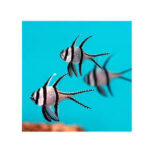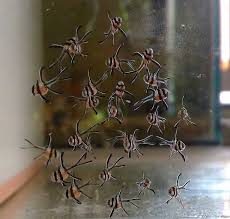The Symbolism of Dragons in Traditional Culture
Dragons have held a significant place in traditional cultures across the world, but nowhere has their influence been as profound as in Chinese and East Asian traditions. Unlike Western dragons, which are often depicted as menacing creatures, Chinese dragons (lóng, 龙) are seen as benevolent, wise, and powerful beings associated with nature, the elements, and cosmic forces.
In traditional Chinese culture, dragons symbolize:
- Power and Authority – The emperor was often referred to as the “Son of the Dragon,” and dragon motifs were used in imperial robes, palaces, and thrones.
- Prosperity and Good Fortune – Dragons are believed to bring luck, wealth, and success. Many businesses and families display dragon images for blessings.
- Balance and Harmony – Dragons represent the forces of nature, controlling rain, rivers, and seasons. They maintain balance between heaven and earth.
- Spiritual Enlightenment – In Daoism and Buddhism, dragons are often depicted as wise beings that guard sacred knowledge and spiritual treasures.
These meanings have persisted for centuries, deeply influencing traditional Chinese philosophy, literature, festivals, and artistic expressions.
The Representation of Dragons in Traditional Art
1. Dragons in Chinese Paintings
Traditional Chinese ink paintings often depict dragons in dynamic, flowing forms, emphasizing their connection with water, wind, and the heavens. These paintings are characterized by expressive brushstrokes, which capture the dragon’s movement and energy rather than focusing on rigid detail.
One famous example is the Nine Dragons Scroll (九龙图), painted by Chen Rong in the Southern Song Dynasty. This masterpiece illustrates dragons emerging from clouds, interacting with waves, and displaying their mystical presence. The use of negative space and ink wash techniques gives the illusion of motion and divine power.
2. Dragons in Sculpture and Architecture
- Imperial Palaces and Temples – Dragon carvings adorn the Forbidden City, the Temple of Heaven, and ancient tombs, signifying the divine right of rulers.
- Dragon Pillars and Bridges – Many traditional Chinese bridges feature dragon motifs, believed to protect travelers and ensure stability.
- Jade and Bronze Dragons – Throughout history, jade and bronze dragon sculptures were crafted as royal treasures, representing wisdom and strength.
3. Dragons in Traditional Clothing and Ceremonies
- Dragon Robes – Only emperors were allowed to wear golden dragon robes, symbolizing their supreme status. The number of claws on the dragon distinguished the emperor (five claws) from nobles (four claws).
- Dragon Dances – Performed during Chinese New Year and other festivals, the dragon dance is a vibrant display of movement, symbolizing the dragon’s ability to bring good luck and drive away evil spirits.
These artistic expressions kept dragon mythology alive for centuries, but with the rise of modern art movements, dragons have evolved beyond traditional representations.
The Influence of Dragons on Contemporary Art
As art transitions into the modern era, traditional dragon motifs have been reimagined and fused with contemporary styles. Today, dragons are widely featured in paintings, sculptures, digital art, fashion, and even pop culture.
1. Dragons in Modern Chinese and Global Art
Many contemporary Chinese artists have incorporated dragon symbolism into their work, blending ancient mythology with new artistic interpretations.
- Xu Bing’s “Phoenix” Sculptures – While not dragons, Xu Bing’s large-scale phoenix sculptures, made from industrial materials, reflect themes of tradition, modernization, and rebirth. His work often evokes the spirit of the dragon in its form and symbolism.
- Cai Guo-Qiang’s Explosive Dragon Art – Known for his firework-based art, Cai Guo-Qiang has created dragon-inspired performances, such as Sky Ladder, where a burning ladder ascends into the sky, resembling a dragon’s ascent to the heavens.
Western artists have also drawn inspiration from Chinese dragon imagery, incorporating it into murals, tattoos, and digital designs that reinterpret the dragon’s traditional symbolism.
2. Dragons in Digital and Pop Culture Art
The digital age has brought dragons into new mediums, including video games, animated films, and graphic design.
- Animated Films – Movies like Kung Fu Panda and Disney’s Raya and the Last Dragon take inspiration from Chinese dragon mythology, portraying them as wise, magical beings.
- Video Games – Games such as League of Legends and World of Warcraft feature dragons with distinctly Asian-inspired aesthetics. These designs maintain the traditional serpentine body while incorporating modern fantasy elements.
- Street Art and Murals – In urban art, dragons are frequently painted on city walls, blending graffiti styles with traditional Chinese patterns to create striking contemporary imagery.
3. Dragons in Contemporary Fashion and Design
Dragon imagery has also made its way into high fashion, jewelry, and modern design.
- Haute Couture and Streetwear – Brands like Gucci and Balenciaga have incorporated dragon motifs into their designs, merging ancient symbols with modern aesthetics.
- Tattoo Art – Dragon tattoos remain one of the most popular designs worldwide, symbolizing strength, transformation, and mysticism. Many contemporary tattoo artists integrate traditional Chinese dragon styles with hyper-realistic or abstract techniques.
- Architecture and Interior Design – Modern buildings in China, such as the Dragon Building in Beijing, feature dragon-inspired curves and structures, demonstrating the fusion of tradition with futuristic design.
The Cultural Significance of Dragons in Contemporary Society
The persistence of dragon imagery in modern art and design reflects a deeper cultural and philosophical connection to tradition. As globalization merges artistic influences from different cultures, the dragon remains a unifying symbol that transcends time and geography.
1. Reviving Cultural Identity
For many Chinese artists, incorporating dragons into contemporary art is a way to honor their heritage while embracing new artistic expressions. It allows for a reinterpretation of traditional beliefs within a modern context, keeping cultural identity alive.
2. Symbolism in a Changing World
In today’s fast-paced, technology-driven world, the dragon’s symbolism has evolved to represent transformation, adaptability, and innovation. Artists and designers use the dragon as a metaphor for humanity’s ability to navigate change and uncertainty.
3. The Dragon’s Role in Environmental Art
Given the dragon’s historical connection to nature and water, some modern artists use dragon imagery to highlight environmental issues. For example, sculptures of dragons made from recycled materials or digital installations depicting dragons in endangered landscapes draw attention to ecological preservation.
Conclusion
The dragon, a legendary figure deeply rooted in traditional culture, continues to inspire contemporary art in profound ways. From ancient paintings and imperial architecture to modern digital art and global fashion, dragons have adapted to new artistic languages while maintaining their cultural significance.
As the world moves forward, the dragon remains a powerful symbol of strength, wisdom, and transformation. Whether in traditional ink paintings or digital animations, its presence in art reflects humanity’s enduring connection to mythology, spirituality, and the ever-evolving creative landscape.










